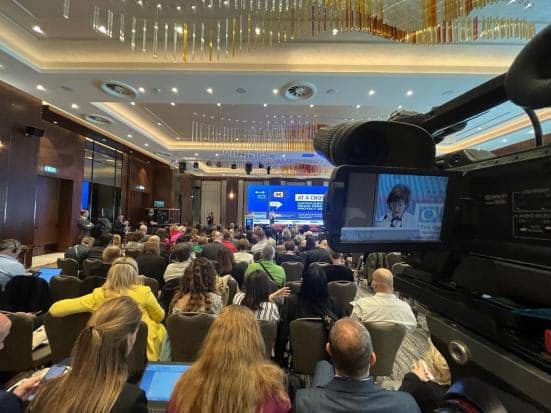The Key Issues in the European Parliament Elections 2024
Elections 2024 – The European Parliament Elections 2024 are just around the corner, and it’s important to be informed about the issues that will be at the forefront of the election. From climate change to immigration policies, this article provides an overview of the key topics that will shape the election and impact the future of Europe, plus, an important entry on why looking at the managing of fundamental rights could probably be one of the most important issues to look at when looking at the programs of the different parties, even if inclusion in the program does not guarantee that once in power they will not change their views…
But anyway, before we start, here is what current President of the European Parliament, Roberta Metsola, said:
“The European Union is evolving continuously. The world is changing and we must change with it. We need reform. We cannot be afraid of change. The EU is not perfect. We must embrace it as we keep listening, keep explaining and keep delivering.
I encourage everyone to recapture the sense of hope and possibility that the European Union offers. To vote. Do not let someone else choose for you. Be part of the largest democratic exercise in Europe.”
The Future of the European Union.
One of the key issues at stake in the European Parliament Elections 2024 is the future of the European Union itself. With the ongoing challenges and the rise of movements across Europe who want less EU interference in national affairs, the election will be a crucial moment for determining the direction of the EU. Issues such as EU integration, the role of the European Commission, and the balance of power between member states will all be hotly debated. The outcome of the election will have significant implications for the future of Europe and its place in the world.
Immigration and Border Control.
Immigration and border control will be another key issue in the European Parliament Elections 2024. The ongoing refugee crisis and the influx of migrants into Europe have led to a heated debate about how to manage borders and control immigration. Some parties advocate for stricter border controls and limits on immigration, while others argue for more open borders and greater support for refugees and migrants. The outcome of the election will have a significant impact on the future of immigration policy in Europe.
Climate Change and Environmental Policies.
Climate change and environmental policies will be a major topic in the European Parliament Elections 2024. The European Union has set ambitious goals to reduce greenhouse gas emissions and transition to a more sustainable economy. However, there are still debates about the best way to achieve these goals and how to balance environmental concerns with economic growth. The election will determine the direction of EU environmental policies and its role in global efforts to combat climate change.
Economic Growth and Job Creation.
Another key issue in the European Parliament Elections 2024 is economic growth and job creation. The COVID-19 pandemic has had a significant impact on the European economy, with many businesses struggling to stay afloat and unemployment rates rising. The election will determine the policies and strategies that will be put in place to support economic recovery and job creation in the EU. This includes debates about taxation, trade agreements, and investment in key industries such as technology and renewable energy.
Digital Transformation and Data Privacy.
Digital transformation and data privacy are also key issues in the European Parliament Elections 2024. With the increasing use of technology in all aspects of life, including government and business, there is a growing concern about data privacy and security. The election will determine the policies and regulations that will be put in place to protect citizens’ personal data and ensure that companies are held accountable for any breaches. Additionally, the election will address the need for digital transformation in various sectors, including healthcare, education, and public services, to improve efficiency and accessibility while also addressing concerns about data privacy and security.
Why Fundamental Rights Should Be a Priority in the European Parliament Elections
Fundamental rights are the basic human rights that every person is entitled to, regardless of their race, gender, religion, or any other characteristic. As citizens of the European Union, we have the opportunity to vote in the European Parliament elections and ensure that our leaders prioritize and protect these rights for all. Let’s make our voices heard and advocate for a just and equitable society.
What are fundamental rights?
Fundamental rights are the basic human rights that every person is entitled to, regardless of their race, gender, religion, or any other characteristic. These rights include the right to life, liberty, and security of person, freedom of expression and religion, the right to a fair trial, and the right to education and healthcare. They are the foundation of a just and equitable society and must be protected for all.
The importance of fundamental rights in a democratic society.
In a democratic society, fundamental rights are essential for ensuring that every individual is treated fairly and with dignity. These rights provide a framework for protecting individuals from discrimination, oppression, and abuse of power. Without fundamental rights, there can be no true democracy, as the basic freedoms and protections that allow citizens to participate in the democratic process would be absent. It is therefore crucial that fundamental rights are prioritized and protected in the European Parliament elections, to ensure that all citizens can live in a just and equitable society.
The impact of the European Parliament on fundamental rights.
The European Parliament plays a crucial role in protecting and promoting fundamental rights across the European Union. Through legislation, oversight, and advocacy, the Parliament has the power to ensure that these rights are respected and upheld by member states and institutions. In the upcoming elections, it is important to elect leaders who prioritize fundamental rights and are committed to defending them for all citizens, regardless of their background or status. By doing so, we can build a stronger, more inclusive Europe that values the dignity and worth of every individual.
Examples of fundamental rights that need protection.
Fundamental rights are the basic rights and freedoms that every person is entitled to, simply by virtue of being human. These include the right to life, liberty, and security of person, freedom of expression, freedom of religion or belief, the right to a fair trial, and the right to education and healthcare. In recent years, there have been growing concerns about the erosion of these rights in Europe, particularly in areas such as freedom of the press, privacy, and non-discrimination. It is essential that we elect leaders who are committed to protecting these fundamental rights and ensuring that they are upheld for all citizens.
How to vote for candidates who prioritize fundamental rights.
When voting in the European Parliament elections, it’s important to research the candidates and their stances on fundamental rights. Look for candidates who have a track record of advocating for these rights and who have concrete plans for protecting them. You can also check the party platforms to see if they prioritize fundamental rights. Don’t be afraid to reach out to candidates directly and ask them about their positions on these issues. By prioritizing fundamental rights in our voting decisions, we can help ensure that our leaders are committed to creating a just and equitable society for all.















